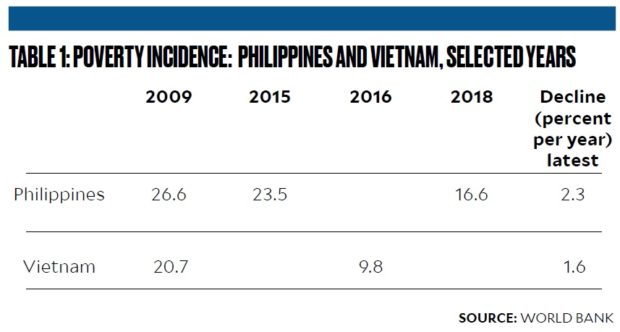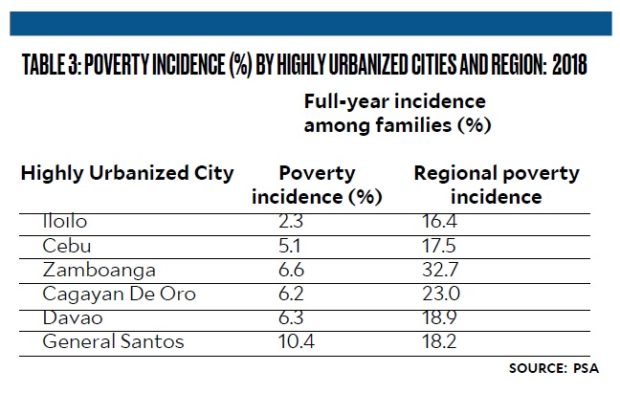The 2018 poverty statistics are out. There were dramatic strides never seen before in decades: national poverty incidence fell to 16.6 percent in 2018 from 23.3 percent in 2015. In effect, the number of poor people went down by 5.9 million to 17.7 million in 2018 from 23.5 million in 2015. This despite higher inflation in the second half of 2018.The poverty incidence declined by 2.2 percent per year. This level was already achieved by Vietnam in 2000s.
The reduction is multi-faceted, but it will not be the focus of this article. It is worth noting though that the National Economic and Development Authority claims the government is “on track” to achieve its goal of slashing poverty incidence to 14 percent by 2022. This significant reduction in poverty is largely attributed to a vibrant economy that generate good jobs, and higher mean salaries and wages. The government’s 4Ps (Pantawid Pamilyang Pilipino Program—conditional cash transfers) and BBB (“Build, Build, Build”) programs provided income cushion.
The Philippine Statistics Authority survey data is extensive, and this article will focus on spatial distribution by region. How did change fan out over the regions?
The regions that posted reduction higher than the average national reduction are:
• Luzon: CAR, Bicol, Mimaropa and Ilocos.
• Visayas: Central Visayas, Eastern Visayas, and Western Visayas.
• Mindanao: Northern Mindanao, Socsksargen and and Caraga.
Sadly, only one region—ARMM—posted a slight increase. Most regions are principally agricultural regions. There appears no solid evidence that agriculture brought gains, given its stagnant performance (+1.3 percent) in 2015 to 2018.
Richer regions had slow reduction (less than 10 percent) compared to Visayas and Mindanao (more than 10 percent). How does poverty incidence compare to capital cities? There remains wide disparity between key cities and their regions. Regional poverty is normally three to five times that of regional cities. Davao region alone has six million versus 1.6 million for Davao City.The regions are principally rural, poverty is driven by low-productivity agriculture. Investments and strong extension services are needed to pump prime productivity and agri diversification. Job creation in processing industries is constraint by severe lack of materials. Under the principle of subsidiarity, the local government units and private sector must take up the cudgel while the the Department of Agriculture will provide steering. (See Table 2 and 3) INQ
This article reflects the personal opinion of the author and does not reflect the official stand of the Management Association of the Philippines, or MAP. The author is the co-vice chair of the MAP AgriBusiness Committee and the executive director of the Center for Food and AgriBusiness of the University of Asia & the Pacific. For previous articles, please visit map.org.ph



